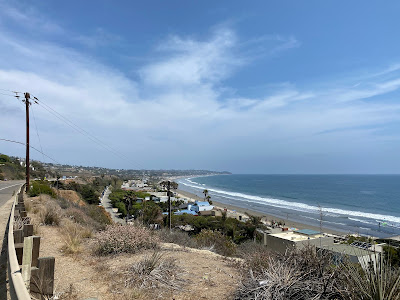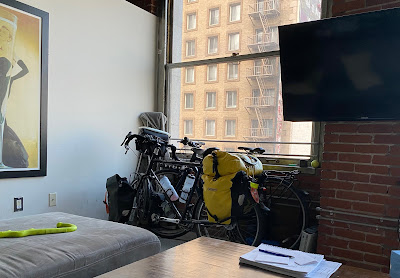It’s hard to imagine a more relentlessly scenic bicycle tour than the 1,800-mile Pacific Coast route from Canada to Mexico, but there are some bumps in this road.
I personally loved the way the route mostly hugged the craggy coastline but at times shot up inland for a stunning detour through the dense ferny forests of majestic redwoods and Douglas firs.
I also loved being able to stay most nights in the low-cost “hiker-biker” campsites most state park campgrounds in Washington, Oregon and California set aside for visiting cyclists.
The fact that the fees for the hiker-biker sites are capped at anywhere from $5 to $12 per night made it possible for me to ride this route on an extremely lean budget.
The availability of the hiker-biker sites also made planning the trip a snap.
But before you load your panniers and start pedaling, be forewarned that the route, which includes more than 100,000 feet of climbing, is not easy, and it traverses some sketchy areas where homelessness and drug abuse abound.
In addition, as I discovered while riding the route during peak tourist season this summer, the high volume of automobile, truck and RV traffic on Highways 1 and 101, the major arteries the route follows, can be hazardous and intimidating.
The traffic is especially problematic on the many road sections that have little or no shoulder to ride on.
To protect myself while riding my bike, I wore brightly-colored jerseys, checked my rearview mirror assiduously and ran up to three flashing taillights simultaneously.
I also adopted a safety-inspired routine: Whenever I approached a chokepoint in the road’s shoulder, I glanced at the traffic approaching from ahead and used my rearview mirror to check on the traffic approaching from behind. If vehicles were approaching from both directions simultaneously, or large vehicles were approaching from behind, I pulled over and waited for the traffic to pass. This stop-and-start strategy was inconvenient, but my priority was survival, not pedaling cadence and efficiency.
If I did the route again, I’d probably put it off until after Labor Day, in hopes that there would be less traffic then.
The biggest eyeopener for me during my journey was how large the homeless population is on the coast.
In downtown LA, there seemed to be homeless people on virtually every block. There were also pockets of homeless individuals in many of the smaller towns on the route, including some of the more rural ones. I even met and rode with several other cyclists who had no permanent abodes.
I am happy to report that I had zero significant mechanical issues with the bicycle I used on this ride: A 2011 Surly Long Haul Trucker equipped with rim brakes.
I replaced the brake pads and chain after 1,000 miles, but the brake pads had a couple thousand miles on them before I started this trip.
I am also happy to report that I got zero flats using my favorite touring tires: the Schwalbe Marathon Plus, HS 440, 26-inch by 1.5-inch. (A new friend I rode with from San Francisco to LA, who was riding on a different brand of “performance” tires, got several flats, including two in one day.)
Since I planned to camp as much as I possibly could during this trip, I invested in a new one-man freestanding tent for the adventure. It was very comfortable and had zero condensation issues. My one complaint was that it was too small to fit all my gear inside with me, something I occasionally would have preferred to do to better secure my possessions. So it’s possible that I will trade this tent in for the two-person model.
My other sleeping gear, which proved to be an ideal match for the chilly night-time temperatures I encountered on the coast (mostly 50s and low 60s), included a lightweight air mattress and air pillow; a down sleeping quilt rated to 40 degrees, and a sleeping bag liner that supposedly adds 15 degrees of warmth to the ensemble.
I regularly wore a wool watch cap and a lightweight puffy jacket first thing in the mornings and at night.
The only things I had mailed home by the time I reached Santa Barbara were a lightweight hammock, a third pair of cycling shorts, two extra shirts, spare socks and my rain pants.
I kept my rain jacket but never put it on because it didn’t rain in the day during the entire 43-day adventure. It did rain lightly one night while I was asleep in the tent.
 |



















































